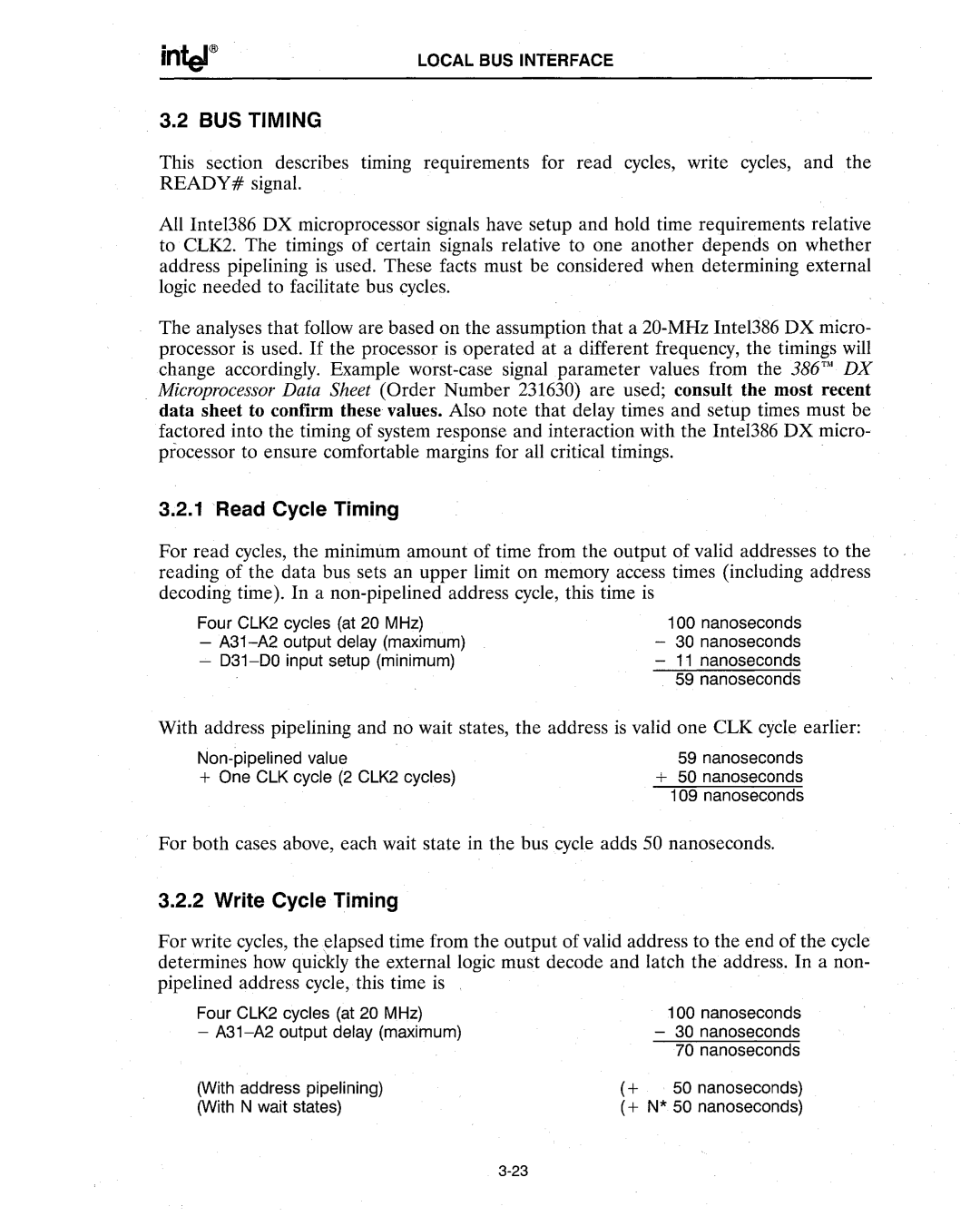
lOCAL BUS INTERFACE
3.2 BUS TIMING
This section describes timing requirements for read cycles, write cycles, and the READY# signal.
All Inte1386 DX microprocessor signals have setup and hold time requirements relative to CLK2. The timings of certain signals relative to one another depends on whether address pipelining is used. These facts must be considered when determining external logic needed to facilitate bus cycles.
The analyses that follow are based on the assumption that a
3.2.1 Read Cycle Timing
For read cycles, the minimum amount of time from the output of valid addresses to the reading of the data bus sets an upper limit on memory access times (including address decoding time). In a
Four ClK2 cycles (at 20 MHz) | - | 100 nanoseconds | |
- | 30 nanoseconds | ||
- | - | 11 nanoseconds | |
|
|
| 59 nanoseconds |
With address pipelining and no wait states, the address is valid one CLK cycle earlier:
59 nanoseconds | |
+ One ClK cycle (2 CLK2 cycles) | + 50 nanoseconds |
| 109 nanoseconds |
For both cases above, each wait state in the bus cycle adds 50 nanoseconds.
3.2.2 Write Cycle Timing
For write cycles, the elapsed time from the output of valid address to the end of the cycle determines how quickly the external logic must decode and latch the address. In a non- pipelined address cycle, this time is
Four CLK2 cycles (at 20 MHz) | - | 100 nanoseconds | |
- | 30 | nanoseconds | |
|
| 70 | nanoseconds |
(With address pipelining) | (+ | 50 | nanoseconds) |
(With N wait states) | (+ N* 50 | nanoseconds) | |
|
|
| |
